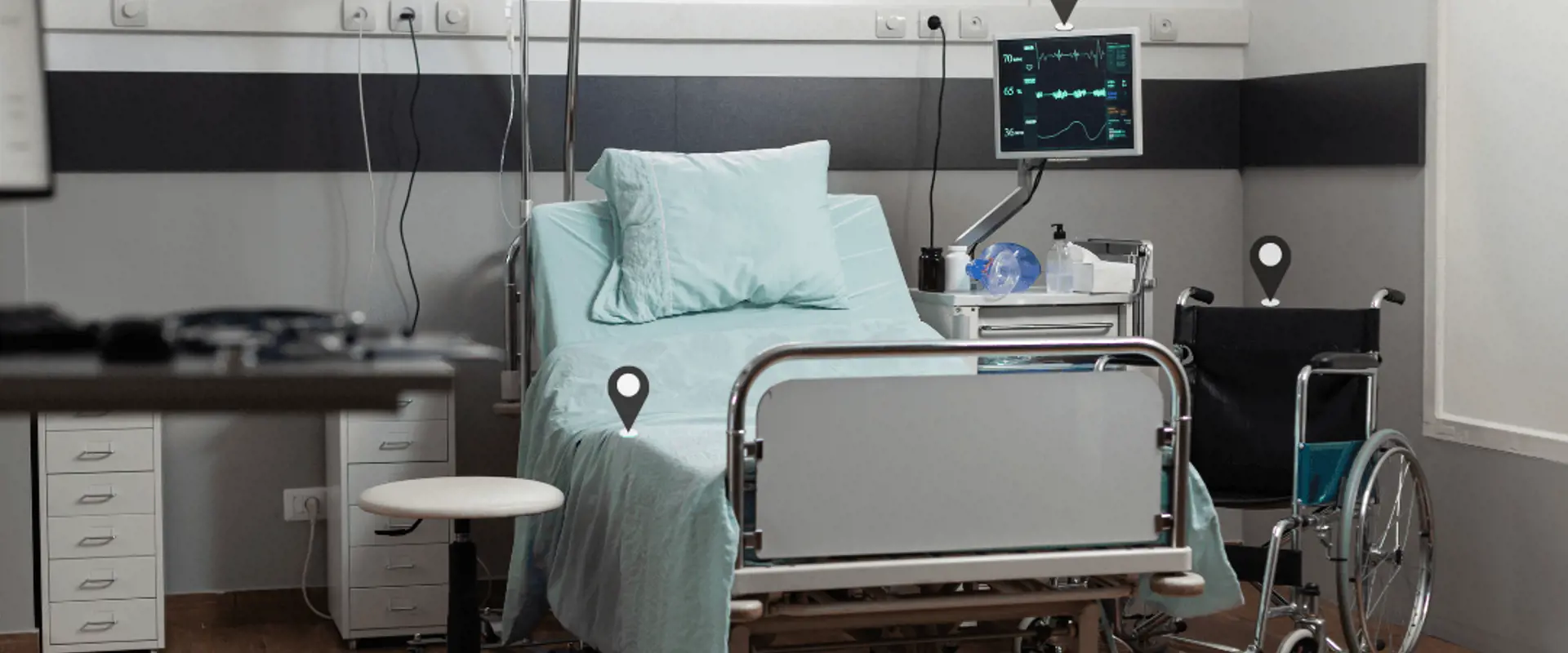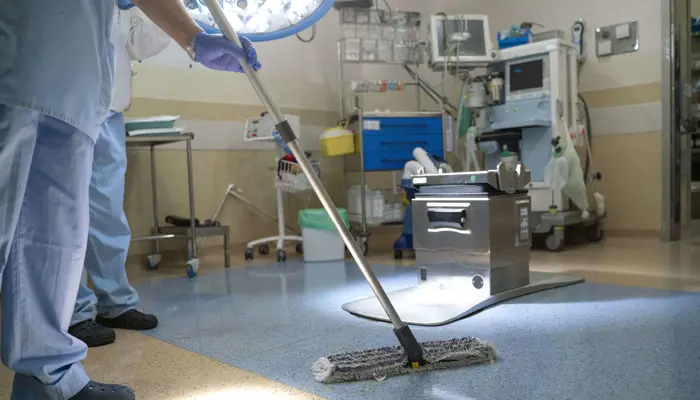
How much it costs you not to know where medical assets are
Locating and tracking medical assets within a healthcare facility is essential not only to reduce over procurement and operating costs but also to optimise staff workflows and productivity. Find out why asset tracking technologies and location intelligence are what you need.
- Loss of $4.000 per year per bed due to lost, misplaced or stolen medical devices
- Purchase of around 20%-50% extra equipment with a rise of inventory-related costs
- Prevent these inefficiencies with asset tracking and digitalisation of the healthcare facility
A good level of healthcare assistance means providing high-quality patient care. Over recent years, healthcare has faced various challenges, mainly related to the heavy pressure caused by the Covid-19 pandemic. Efficiency has therefore gained an even more central role.
Aside from the complex issues linked to the management of the pandemic, inefficiencies often affect day-to-day operations as well.
How much does it cost not to know the location of medical assets?
According to a study of The University of Texas, Austin, US hospitals lose every year $4.000 per bed worth of equipment due to lost, misplaced or stolen medical devices. As a consequence, this study reports that hospitals purchase around 20%-50% more equipment than they actually need, rising operational and inventory-related costs.
Consequently, these inefficiencies reflect on workflows, on staff productivity and on the quality of patient care, with one third of nurses spending one hour per shift just searching for necessary medical devices, instead of focusing on primary tasks - as they declared according to Markets and Markets.
The challenges that healthcare facilities have to face can be therefore summed up as follows:
- hundreds of assets go missing, lost or stolen;
- spending a lot of time in searching for assets throughout the hospital;
- inventory over procurement and associated costs;
- reduced quality of patient care, reflected in increased waiting times.
With more than one thousand medical devices moving around the hospital and hundreds of hospital beds, knowing the real-time location of critical and non-critical equipment within the facility is of utmost importance to promptly respond to emergency situations, to optimally manage daily activities and to have full visibility on the inventory.
And this is where asset tracking comes into play.
What is Asset Tracking?
Asset tracking means locating and tracking medical equipment in real-time and it’s based on RTLS (Real-Time Locating Systems) technologies.
RTLS are location systems able to track every type of asset (e.g. wheel chairs, incubators, heart monitors, mammography machines) with variable accuracy and latency, depending on the provider, on the underlying technology and on the needs of the customer.
Real-Time Locating Systems work with different technologies including Bluetooth Low Energy (BLE) and Ultra-Wide Band (UWB) which generally have an accuracy ranging from 0,5 to 3m and latency of 0,1 seconds indoors. High accuracy is required to precisely locate a tool, whereas it might be lower in inventory rooms for counting purposes.
RTLS can require both cabled (Ethernet connectivity) and wireless infrastructures. The hardware setup usually includes receivers (antennas) installed on the ceiling or walls and TAGs, of different sizes and form factors, to be attached to the assets.
The RTLS is therefore made up by the hardware, which provides the dot on the map, but they must necessarily coexist with a software for the delivery of services such as:
- asset search in real-time
- real-time notifications if, for instance, given equipment leaves the predefined zone
- automatic inventory count and management
analytics on equipment handling to identify bottlenecks and usage for maintenance purposes.
5 benefits of Asset Tracking
The efficiency gains coming from such an infrastructure and services translate into 5 key benefits:
- reduced time in searching for assets by medical staff, to be repurposed to key tasks
- reduced asset misplacements and thefts
- reduced costs related to unnecessary supply thanks to an always up-to-date inventory
- improved scheduling of maintenance operations thanks to analytics on handling and usage
- improved quality of patient care as more time will be devoted to the patients.
Hospitals that have already implemented an asset tracking solution have observed huge efficiency gains. Some reported that search time for a single tool decreased from 30 minutes to less than 3 minutes. Some others stated that they were able to save thousands of dollars previously being devoted to the procurement for unnecessary equipment.
Beyond Asset Tracking...
Once the RTLS infrastructure is in place, many other services can be built to optimise healthcare operations starting from the digitisation of a healthcare facility.
For example, by using TAGs in the form of bracelets, patients can be tracked to ensure their safety all along the care journey. This is particularly valid for elderly, Alzheimer-affected or psychiatric patients. Their location can be monitored at any time and medical staff be alerted if they leave the room or if they get into dangerous situations, like approaching the staircases or the exit of the hospital or institution. We discuss this topic in an article in the related resources box.

